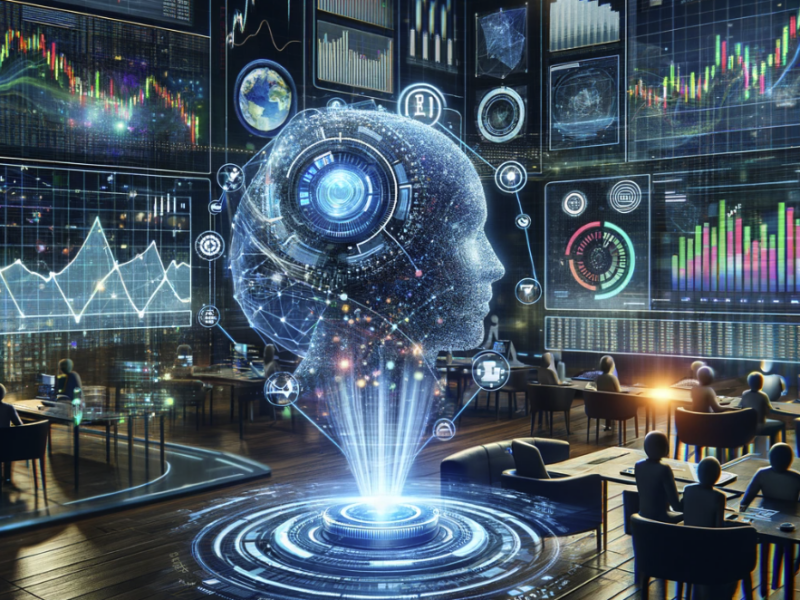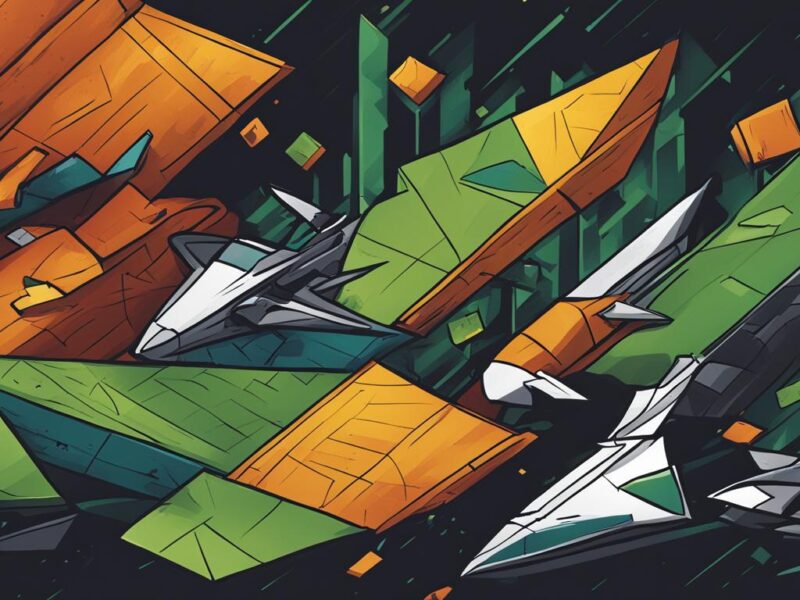“Changing World Order: Where We Are and Where We’re Going” is a comprehensive study by Ray Dalio that delves into the rise and fall of past leading empires, providing context to today’s economic, political, and societal dynamics.
Dalio’s objective is to put the current state of global affairs into the perspective of the bigger picture, considering both historical precedents and possible future trajectories.
Dalio’s Approach
Dalio’s perspective is shaped by his experience as an investment manager, where understanding long-term history became imperative to avoiding major market surprises.
His most significant career mistakes came from missing big market moves that hadn’t happened within his lifetime but had occurred many times in the past.
This realization led him to examine economic and market activities throughout history, across the globe, to identify timeless and universal mechanics and develop principles for responding effectively.
Dalio’s approach is not purely academic; it is practical, designed to provide an edge in his work as a global macro investor.
Understanding Through Archetypes
Dalio’s studies of timeless and universal principles have revealed that most events—prosperous periods, depressions, wars, revolutions, bull markets, bear markets, etc.—happen repeatedly through time for fundamentally the same reasons.
These events typically occur in cycles, often in cycles that are as long or longer than our lifetimes.
This realization led him to view events as part of broader patterns and cycles, giving him a bigger-picture perspective.
In his view, things evolve upward (improve over time), with cycles around them, like an upward-pointing corkscrew, leading to an understanding of the cause-effect relationships behind these patterns.
The Big Cycles of Empires
Studying the cycles of money, credit, and economic activity throughout history made Dalio aware of the long-term debt cycle, which typically lasts about 50-100 years.
This perspective helped him understand the events following the 2008-09 financial crisis when interest rates hit 0% and central banks printed money and bought financial assets.
The Study’s Contents
The chapters of the study encompass various themes:
- The Big Cycles in a Tiny Nutshell
- The Big Cycle of Money, Credit, Debt, and Economic Activity
- The Changing Value of Money
- The Big Cycles of the Dutch and British Empires and Their Currencies
- The Big Cycles of the United States and the Dollar, Parts 1 and 2
- The Big Cycles of China and Its Currency
- US-China Relations and Wars
- The Archetypical Cycle of Internal Order and Disorder
- Delving into the Six Stages of the Internal Cycle with a Particular Focus on the US Now.
These collectively offer an in-depth look at the cyclical nature of economic, social, and political trends, as viewed through the lens of historic and contemporary empires.
Changing World Order – Executive Summary
Ray Dalio argues that the world is in the midst of a major shift in power, with the United States no longer the sole hegemon.
He identifies three main drivers of this change: the rise of China, the decline of the United States, and the increasing interconnectedness of the world.
Dalio argues that China is on track to become the world’s largest economy soon – and already is on a purchasing power parity (PPP) basis.
He cites China’s rapid economic growth, its large population, and its strategic location as reasons for its rise.
He also notes that China is becoming more assertive on the world stage, challenging the United States for dominance in areas such as trade and technology.
Dalio also argues that the United States is in decline.
He cites the country’s rising debt, its aging population, and its political polarization as reasons for its decline.
He also notes that the United States is no longer the sole superpower, with China and other countries (notably its alliance with Russia) challenging its dominance.
Finally, Dalio argues that the world is becoming increasingly interconnected.
He cites the rise of globalization, the internet, and the global financial system as reasons for this interconnectedness.
He also notes that this interconnectedness makes it more difficult for countries to act unilaterally, and increases the risk of conflict.
Dalio concludes by arguing that the world is in a period of great uncertainty.
He notes that the old world order is ending, and a new one is not yet clear. He also notes that this uncertainty creates opportunities for new leaders and new ideas.
For those who prefer video form:
Principles for Dealing with the Changing World Order by Ray Dalio
Concluding Thoughts on Ray Dalio’s ‘Changing World Order’
Dalio’s study underscores the importance of understanding history and the cyclical nature of social, economic, and political trends.
His systematic exploration of these cycles aims to equip readers with the tools to navigate the present and future, drawing lessons from the past.
While the study is rigorous and comprehensive, Dalio emphasizes its practical application, designed to inform decision-making in the real world.
Here are some additional thoughts:
- Dalio’s analysis is insightful and thought-provoking. He provides a comprehensive overview of the major forces that are shaping the world order, and he offers a clear and concise assessment of the risks and opportunities that these forces present.
- Dalio’s article is timely and relevant. The world is indeed in a period of great uncertainty, and Dalio’s analysis provides valuable insights into the forces that are driving this change.
- Dalio’s article is a must-read for anyone who wants to understand the future of the world order. It is a thoughtful and insightful analysis that provides a valuable framework for thinking about the challenges and opportunities that lie ahead.
FAQs on “Ray Dalio – Changing World Order Summary [Rise & Fall of Empires]
1. Who is Ray Dalio, and what qualifies him to write about the changing world order?
Ray Dalio is a renowned American billionaire investor, hedge fund manager, and philanthropist.
He’s the founder of Bridgewater Associates, one of the world’s largest and most successful hedge funds.
Throughout his career, Dalio has conducted and shared in-depth research on economic patterns, cycles, and systems, making him a highly respected voice in global economic affairs.
His insights are backed by meticulous analysis of historical and contemporary economic data.
2. What is the central theme of Ray Dalio’s “Changing World Order”?
The central theme of “Changing World Order” is the cyclical nature of the rise and fall of empires.
Dalio examines historical patterns and factors that lead to the ascent and decline of global powers.
He explores how economic strengths, competitiveness, innovation, debts, and geopolitical dynamics play a role in shaping this world order, providing lessons for current and future decision-makers.
3. How does Dalio use history in this work?
Dalio uses history as a tool to identify and understand recurring patterns in the world order.
He analyzes major world empires from the past 500 years, highlighting their economic and political patterns.
By comparing historical data and events, he establishes a framework that helps explain the dynamics of the rise and fall of these empires, which is also applicable to present-day situations.
4. According to Dalio, what are the key indicators of a rising or falling empire?
Dalio identifies several key indicators of the status of an empire.
For a rising empire, these include strong economic foundations, technological innovation, robust education systems, and effective governance.
Falling empires, on the other hand, are often characterized by excessive debt, wealth and opportunity gaps, declining competitiveness, political fragmentation, and relative declines in power.
5. What does Dalio mean by the term “Changing World Order”?
“Changing World Order” refers to the shift in global power dynamics.
This term encompasses the cyclical rise and fall of empires or superpowers.
Dalio posits that understanding these patterns can provide valuable insights into present and future geopolitical and economic trends.
6. What are Dalio’s predictions for the future based on the Changing World Order?
While Dalio doesn’t make specific predictions, he implies that the trends he identifies suggest a shift in the balance of global power.
He points to signs of decline in Western countries, especially the U.S., and the concurrent rise of countries like China.
Dalio warns that transitions in the world order can be disruptive and often come with conflicts, urging decision-makers to learn from historical cycles to manage these transitions effectively.
7. How does Dalio’s work relate to his role as a hedge fund manager?
Dalio’s role as a hedge fund manager has given him a unique perspective on global financial trends and deep insights into the macroeconomic workings of various countries.
His understanding of the global economic and political landscape feeds into his investment strategies.
Thus, his study of the changing world order is a natural extension of his work, underlining his broader concern with understanding and predicting significant economic shifts.
8. How can one apply the lessons from the “Changing World Order” in investment strategies?
Dalio’s work offers investors a historical perspective on the cyclical nature of global economies and geopolitics.
Understanding these cycles and being aware of indicators of rising or falling powers can help investors better predict long-term trends.
This knowledge can influence decisions such as geographic diversification of investments, sector-specific strategies, and risk management.
9. Is the book “Changing World Order” accessible to non-economists?
Yes, “Changing World Order” is written in a way that is accessible to non-economists.
Dalio uses clear language, real-world examples, and historical narratives to explain complex economic and geopolitical concepts.
However, it may require a certain level of interest in history, economics, and geopolitics to fully appreciate its depth and implications.
10. Where can I get a copy of “Changing World Order”?
“Changing World Order” can be found in major bookstores and online retail platforms like Amazon.
Please check the latest availability and editions to ensure you’re getting the most up-to-date version.


